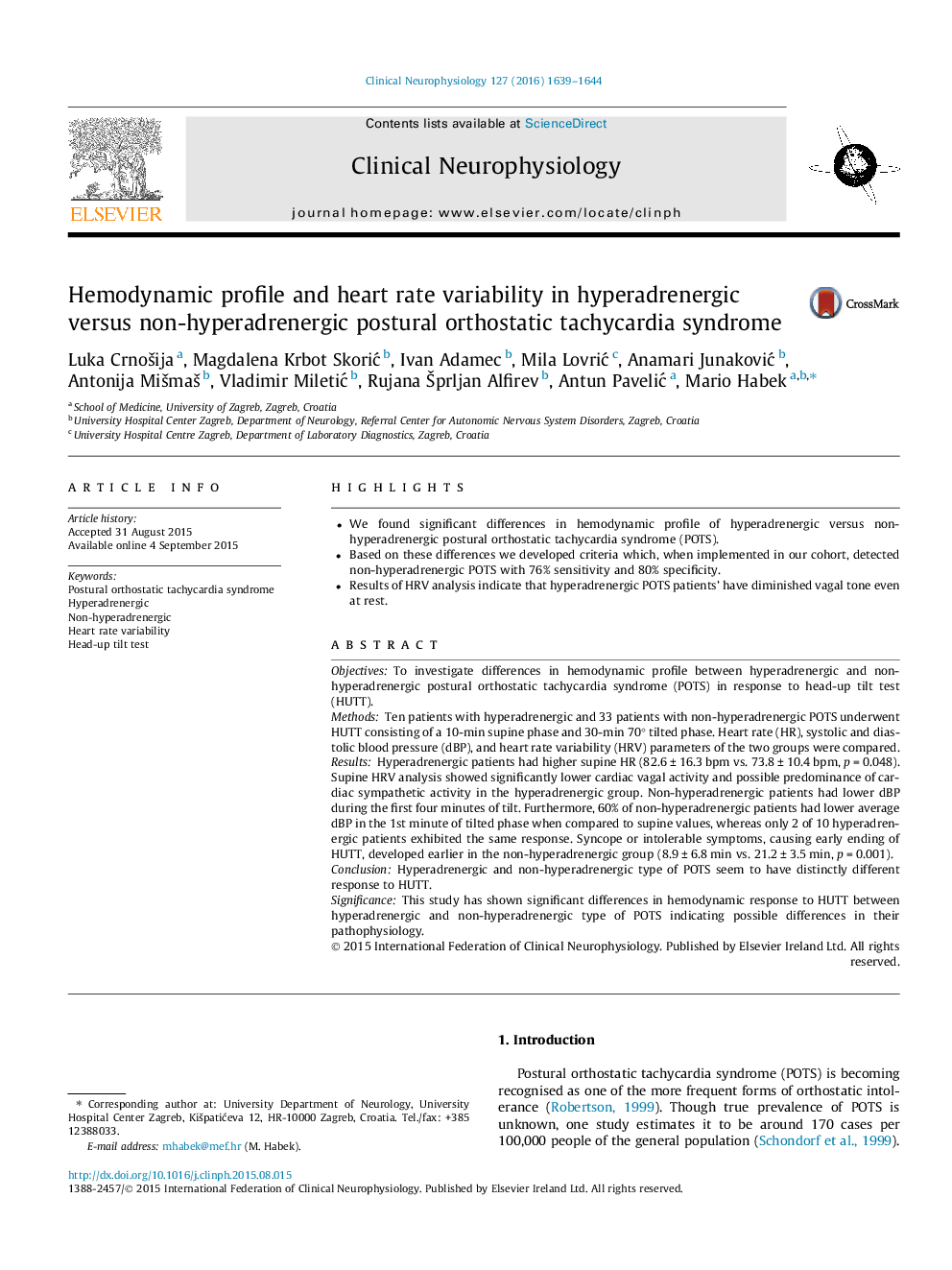| Article ID | Journal | Published Year | Pages | File Type |
|---|---|---|---|---|
| 6007680 | Clinical Neurophysiology | 2016 | 6 Pages |
â¢We found significant differences in hemodynamic profile of hyperadrenergic versus non-hyperadrenergic postural orthostatic tachycardia syndrome (POTS).â¢Based on these differences we developed criteria which, when implemented in our cohort, detected non-hyperadrenergic POTS with 76% sensitivity and 80% specificity.â¢Results of HRV analysis indicate that hyperadrenergic POTS patients' have diminished vagal tone even at rest.
ObjectivesTo investigate differences in hemodynamic profile between hyperadrenergic and non-hyperadrenergic postural orthostatic tachycardia syndrome (POTS) in response to head-up tilt test (HUTT).MethodsTen patients with hyperadrenergic and 33 patients with non-hyperadrenergic POTS underwent HUTT consisting of a 10-min supine phase and 30-min 70° tilted phase. Heart rate (HR), systolic and diastolic blood pressure (dBP), and heart rate variability (HRV) parameters of the two groups were compared.ResultsHyperadrenergic patients had higher supine HR (82.6 ± 16.3 bpm vs. 73.8 ± 10.4 bpm, p = 0.048). Supine HRV analysis showed significantly lower cardiac vagal activity and possible predominance of cardiac sympathetic activity in the hyperadrenergic group. Non-hyperadrenergic patients had lower dBP during the first four minutes of tilt. Furthermore, 60% of non-hyperadrenergic patients had lower average dBP in the 1st minute of tilted phase when compared to supine values, whereas only 2 of 10 hyperadrenergic patients exhibited the same response. Syncope or intolerable symptoms, causing early ending of HUTT, developed earlier in the non-hyperadrenergic group (8.9 ± 6.8 min vs. 21.2 ± 3.5 min, p = 0.001).ConclusionHyperadrenergic and non-hyperadrenergic type of POTS seem to have distinctly different response to HUTT.SignificanceThis study has shown significant differences in hemodynamic response to HUTT between hyperadrenergic and non-hyperadrenergic type of POTS indicating possible differences in their pathophysiology.
